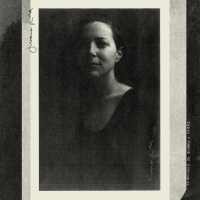
|
-
Before there was an internet and synthesizers and artificial intelligence, there was, well, everything. That’s the simpler world that Juana Luna explores on Canciones en Blanco y Negro. Born in Buenos Aires amid a family that loved Argentinian folk music, Luna moved to the U.S. at the age of 21 to attend the Berklee School of Music. Among her dreams was to follow the example of Juan Luis Guerra, who went to Berklee to study jazz but made a career of reinventing traditional music from the Dominican Republic.
Now 36 years old, Luna has released a spare, mostly-acoustic album where her love of folk music and the family stories of her youth began to rise to the surface.
Because both a friend and her grandmother told her she had a “voice from another time,” Luna said she thought: “Well, I have all the all these old songs, and some people tell me I have this old voice, so okay, maybe I’ll just embrace that and and do something kind of looking backwards and holding those sound textures of the past, and also the songs."
Read Marty Lipp's interview and hear some of Luna's new album.
|
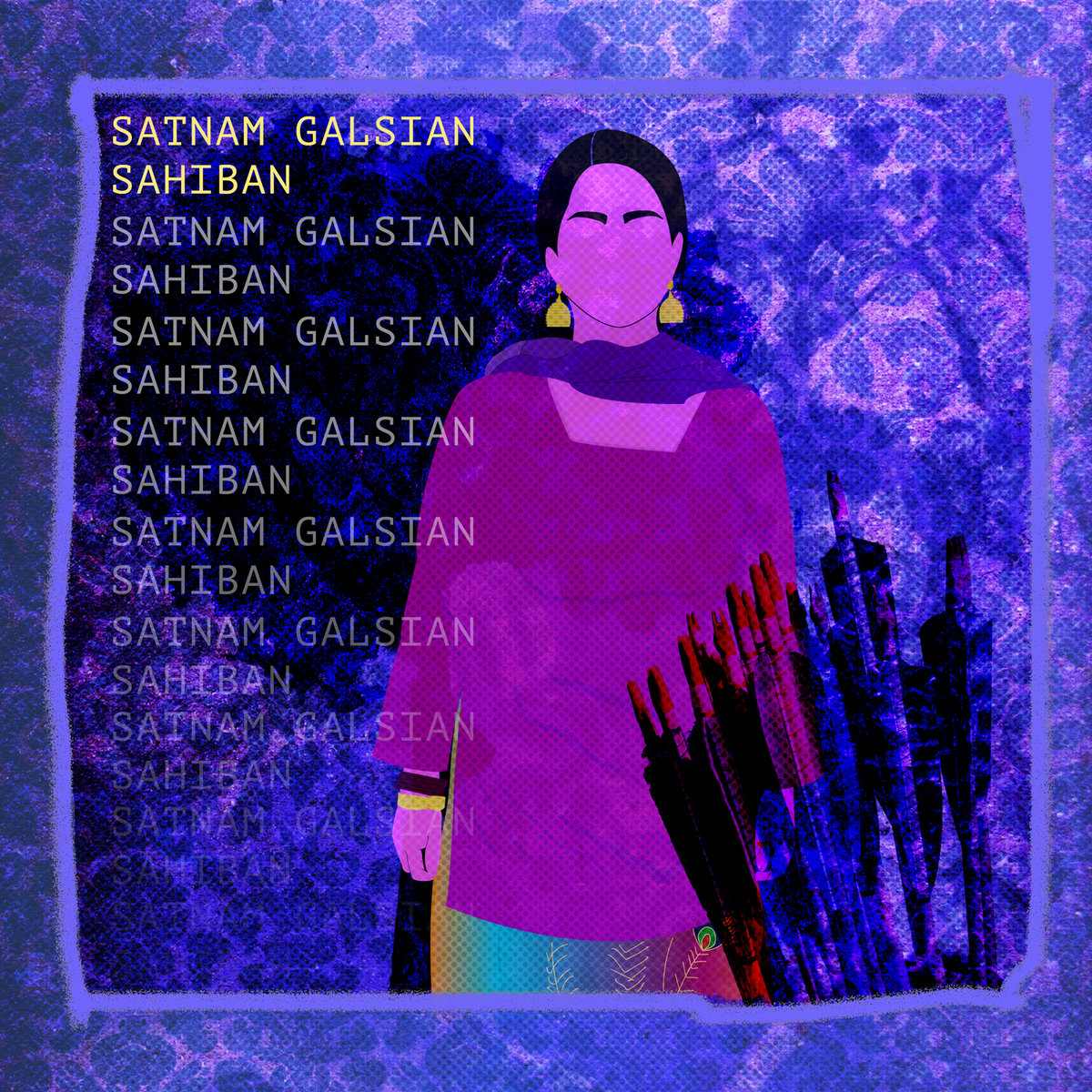
|
-
A little earlier this year, Anglo-Indian singer Satnam Galsian had a residency at Opera North in Leeds, and for it she composed this set of songs, working with poet Hafsa Aneela Bashir. Sahiban is a feminist re-working of "Mirza and Sahiban," one of the epic love stories from the Indian subcontinent. But where it was originally framed as a tale of woman's betrayal that resulted in the man's death, Galsian reclaims it, telling it from Sahiban's perspective, giving the woman her own, powerful voice.
Read Chris Nickson's review and listen to some of the music.
|

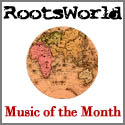
|
-
It's a year and a half since Simon Emmerson, the founder and guiding light of Afro Celt Sound System, died. But the band lives on, playing a fresh set of dates to coincide with the release of OVA, Emmerson's swansong with the group. It's a beautiful piece of work, and from the opening notes of "The Hawk Owl's Lament," which swoops and glides, rises and dives like the bird, everything is pitched just right.
It's a reminder of just what he achieved with Afro Celt Sound System, as well as all his other projects. He was the imagination behind them all, and the glue that held them together.
Read Chris Nickson's review and listen.
|
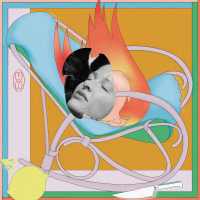
|
-
What on earth is "Haute-Couture Pop"? My brain is still chewing on that bit of promomotional phrasing as I listen to Ëda Diaz’s debut album, the sonic kaleidoscope that is Suave Bruta. Maybe they mean: lush, opulent, colorful? The result is deeply processed rather than acoustic - lots of aural collage and pulling and bending sounds. It has pleasing moments of Eda singing with her bass- and building from spare to layered with electronic pyrotechnics. Diaz, a French Columbian living in Paris, draws on multiple musical traditions and is by turns frenetic, bouncy, soulful, lyrical and always playful. It is rhythmically a lot of fun, with dance inducing, syncopated body-shaking tunes.
Read the review by Martha Willette Lewis and hear some of the music.
|

|
-
Ruca Rebordão was born in Angola, spent his adolescence in Brazil, and now lives in Portugal. This is his debut solo album. It draws on the rich musical traditions of the countries of his biography, and reflects the mix of people and musics in Portugal that spring from the strong cross-Atlantic connections between the Lusophone countries.
An album by a percussionist - won't it be all about rhythms and banging stuff rather than songs and melody? Well, not Mestiço Atlântico. Rebordão's wide range of percussion is more about pitch and contrasting textures than thud, and this is a varied and very attractive set of songs and instrumentals, the majority his own, with finely wrought arrangements featuring guest vocalists and instrumentalists with most of whom he's played over the years.
Andrew Cronshaw guides you though this varied set of songs and instrumentals.
|
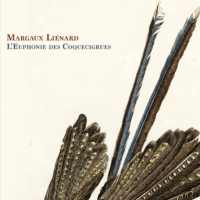
|
-
Here is an unexpected French delight of strings, a true euphony in pursuit of a mythical bird. The brainchild of hardanger fiddle player Margaux Liénard, it’s brimming with melodies that echo quite a few cultures and countries (“Polka Van Elwijt” receives a frisky treatment with a few overtones of klezmer along with goofy whistling birdcalls) from an exquisite string quartet. The compositions on L'Euphonie Des Coquecigrues are sophisticated and demanding, and full of surprises.
Read Chris Nickson's review and hear the music.
|

|
-
A new Lo’Jo album is always a source of surprise and delight. There’s a sense of anticipation, wondering just where they’ve been on their musical travels and what they’ve brought back with them. That beauty of the new is carefully layered with a sound that’s ineffably theirs, built around Denis Péan’s gruff sprechgesang mixed with the glowing sororal harmonies of the El Mourid sisters. Along with violinist Richard Bourreau, they form the core of the band alongside bass player Alex Cochennec. Over the course of several decades they’ve created and refined something unique, the arrangements growing from the early ramshackle explorations into something complex and sometimes even lush.
Read Chris's review and hear some of the music on Feuilles Fauves.
|

|
-
Discovering a lost Nurat Fateh Ali Khan album is a very big deal. He was more than the best-known Qawwali singer, he was one of the world’s greatest vocalists, whose voice could take wing on flights of ecstasy. He was already a massive star to many by 1990, when Chain Of Light was recorded in a single day with producer Michael Brook. Khan was carrying on what had essentially been the family business for six centuries. The great beauty of this is that the album captures him at his very traditional peak. The sound is crystalline, and once Khan is airborne, his voice is heart-stopping.
Read Chris Nickson's review and hear some of the music.
|


|
-
The bouncing rhythm of ska makes a good vehicle for the delivery of lyrics. It gives a strong, upbeat dance impulse with plenty of space for the words to be prominent and resonate. A prime example of that by non-West-Indian musicians, here in the UK, is the very London band Madness; in Belgium it's the very Brussels band Jaune Toujours. Whereas Madness has piano, guitar, bass, drums and sax surrounding witty vocals, the sound of Jaune Toujours is of a tight melding of brass and accordion, with no guitars or keyboard. Its lineup is horns, soprano sax, clarinet, bass, drums, and the warm, slightly husky voice of Piet Maris. The lyrics Maris writes are largely in French or Dutch, the two languages most spoken in Belgium, though for this latest album they're in French and English, often switching between the two within a song. Propelled by this appealing, dance-motivating music, Vertigo is a rallying cry, the songs are slogans for a better world, which has been a theme of much of Jaune Toujours's output over the years.
Read Andrew Cronshaw's review, see a video and hear some of the tracks from the album.
|
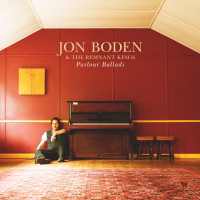
|
-
Parlour songs were the sentimental – often outright maudlin – ballads so beloved in Victorian times, when most families with enough money had a piano and at least one person who knew how to play it. They were more wholesome than music hall songs, the PG-rated pop of their times, and the sheet music sold like hotcakes in a pre-recording era. Jon Boden, probably still best known as the frontman of Bellowhead, wanted to explore the area where folk songs and parlour ballads meet in an album that gives him chance to play more piano. So far, so good, but in the end, while he and his band give the material a lush treatment, very little of it has actually come out of the parlour. What we’re mostly hearing are folk songs, like the opener “On One April Morning,” which was collected in 1908. It’s a lovely, heartfelt version, in the style of a parlour song, but bringing a very different history with it.
Read the review and hear some of the music from Jon Boden & The Remnant Kings' Parlour Ballads.
|
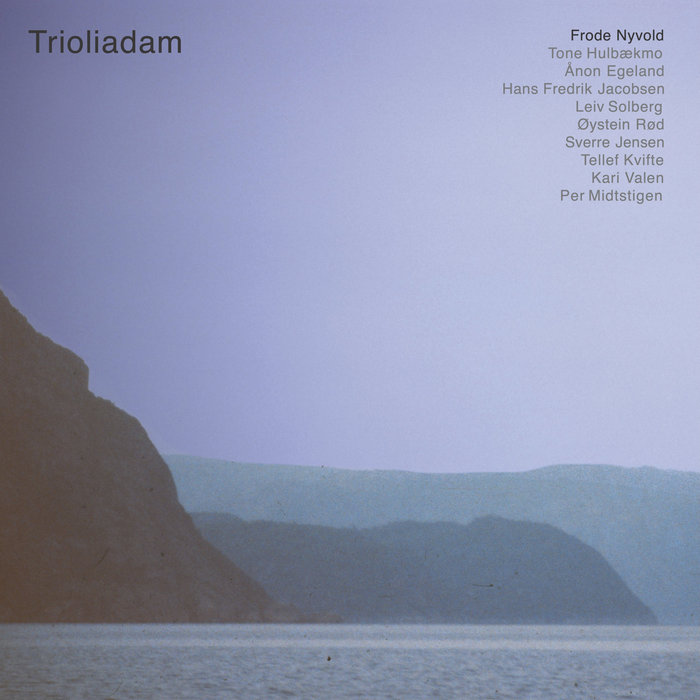
|
-
There's something satisfying about learning of a recording made decades earlier being rediscovered when it had been presumed lost. Trioliadam (Taragot Sounds) was recorded in 1981 on a farm in the east of Norway over a period of three days, but was never released, Fortunately a rough cassette mix survived and, with some improvements having been made to the sound quality, the album has finally seen the light of day.
The musicians on the recording were originally brought together by singer Frode Nyvold. He is joined on a collection of traditional tunes and songs by Leiv Solberg, Hans Fredrik Jacobsen, Ånon Egeland, Øystein Rød, Per Midstigen and others, on a variety of instruments and vocals.
Listen to some of the music and read Mike Adcock's review.
|

|
-
Bashkortostan, in the southern Urals, is a republic of the Russian Federation. Bashkir songs have strong, wide-ranging melodies, and there are many fine singers. The ever-growing Antonovka Records series of digital albums includes 15 recorded in 2023 in the villages and towns of Bashkortostan. Five of those, part of another, and one from earlier in the Antonovka catalogue, are devoted to specifically Bashkir traditional music, both vocal and instrumental.
Andrew Cronshaw explores this music in his latest reviews.
|
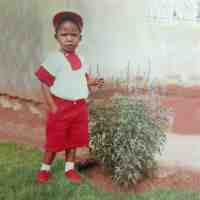
|
-
Malcolm Jiyane's True Story is in part channeling his South African musical and political heroes who have departed this world. There is a moral authority to the music yet the sound is not so simple to describe and the theme not so easy to pinpoint. The tracks sometimes sound like a holy figure singing in deep meditation, other times, Jiyane’s trombone can sound like it is coming from the distant past. Most of the time the music is joyous in the way of South African music, but it catches at the back of your throat. There is more than sadness in the joy. To borrow a title from Abdullah Ibrahim, this is water from an ancient well. Lisa Sahulka introduces you to the musician and composer's new Tree-O.
|

|
-
There’s no doubt that Irish music is currently enjoying a grand moment, and Irish folk in particular is glittering and full of marvels. With artists like Lisa O’Neill, ØXN with their ventures into darkness, and Dublin’s Lankum as the standard bearers, Irish folk is in a fervor of musical adventure. It’s a good time for Landless to re-emerge, six years after their debut. Their sound on Lúireach is entirely their own, revolving around their four female harmonies and very spare instrumentation. The power here lies in that sparseness, originally nurtured by the Shape Note tradition, where austerity offers richness.
Chris Nickson reviews.
|
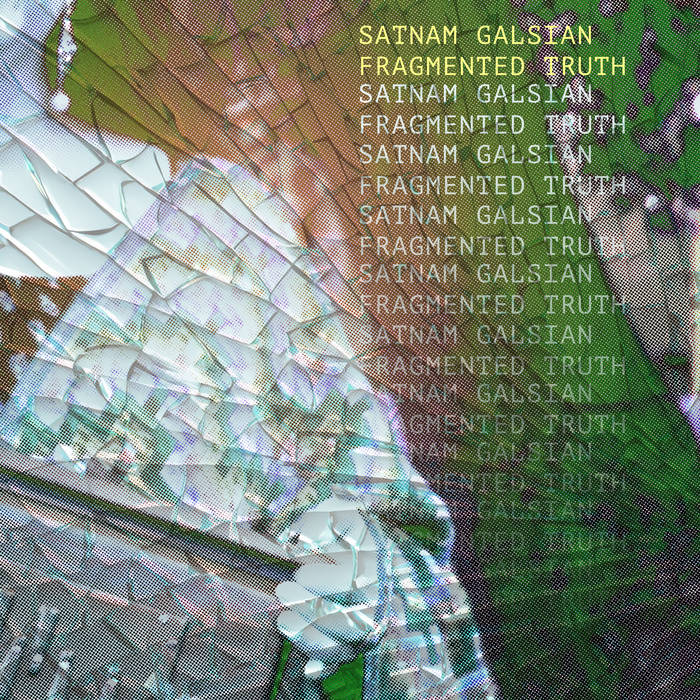
|
-
With her band, Kinaara, now seemingly history, English singer Satnam Galsian is starting to explore life as a solo artist, and doing it in a very stripped-back fashion: just her voice alongside Mark Volpe’s shruti box. But she’s still experiment and seeing where Indian and Western traditions can blend, as on the old Irish air “Lagan Love,” where her vocal ornamentation takes the traditional melody and weaves a lovely new tapestry. Fragmented Truth is a sure sign that Galsian has found her own voice and is using it to create something that’s pushing at the musical seams. Listen, and read Chris Nickson's review.
|
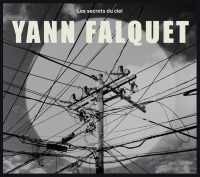
|
-
Andrew Cronshaw writes, "I’ve seen guitarist and singer Yann Falquet with Québec trio Genticorum in various places around the world. But his new album Les Secrets du Ciel, while still very much an aspect of Québécois music, takes a different approach. All the songs on the album are in French from the French-Canadian ballad tradition, found by Falquet mostly in books or archives. I try to avoid comparisons in reviews, but just to give an idea, the melodies and Falquet’s warm vocal and elegant guitar accompaniments sometimes remind of the solo works of France’s Gabriel Yacoub."
Read Andrew's full review and listen to some of the music.
|
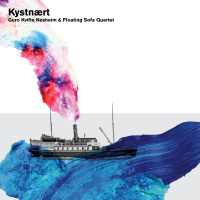
|
-
Truly a pan-Nordic project, this pairing of the Floating Sofa Quartet (Denmark, Sweden, and Finland) with Norwegian hardanger fiddle player Guro Kvifte Nesheim creates a kind of Scandinavia dream team. They’re not strangers – Nesheim subbed with the band three years ago – but this is their first planned project together. Kystnært highlights the connections between the music from the southern coast of Norway with other regional cultures, and Nesheim looked to master fiddler Ågon Egeland to help her research.
Given that the music moved between countries with boats and trade, it’s apt to begin with “Devil Among The Sailors.” The set kicks off with a Swedish polska before veering into variations on the tune from elsewhere that bring into focus the similarities and difference in styles.
Read Chris Nickson's review and listen to some of the tunes.
|
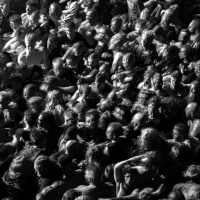
|
-
Roughly a decade ago, a Durban-based EDM/house-subgenre known as gqom (pronounced “gome”) emerged. Pioneered by such names as DJ Lag, Distruction Boyz and others, the music takes subtle elements from 1990’s house offshoot kwaito, snags some features from amapiano, gqom’s contemporary dance/pop music counterpart, and cranks the bass, minimalizing everything else, for stutter-y, dank club grooves. And the trio of Andile Mazibuko, Franco Makhathini, and Njabulo Sibiya- aka Omagoqa - have been spitting out single tracks and EPs at a ferocious rate since 2021. Umqhumo Wethu is experimental South African dance music at its most radical.
Bruce Miller reviews.
|


|
-
The hands-down winner for both wittiest title and album cover of 2024 - Proxy Music, is the very welcome return of Linda Thompson on her first proper solo album since 2013. Well, sort of. She provides the songs, either written alone or with others, but her voice only crops up once, among the backing vocalists on one track. No surprise, perhaps, given her longtime problems with spasmodic dysphonia that's so often prevented her from singing. But instead of trying to put herself front and centre on the recording, she came up with a very cunning plan using other singers - proxies. It turns out to be very much a family affair, involving son Teddy and daughter Kami, along with her son-in-law, grandson, ex-husband, and many other willing spirits joining in.
Chris Nickson's review concludes "Quite simply, it doesn't get any better than this," and the editor heartily agrees.
|

|
-
Upon touching down on the grounds of the Creative Music Studio in Woodstock, New York, Cyro Baptista began an ongoing adventure with jazz that changed him, not only musically, but as a person as well. It was 1980, and Baptista’s hometown, Sao Paulo, Brazil, was not yet percolating with the new explorations in modern jazz to come, and so this wildly exuberant percussionist set forth to chart new territory. Baptista found himself in the august company of co-founder Ornette Coleman, Don Cherry, Trilok Gurtu, John Zorn, Sun Ra, and his compatriota, Naná Vasconcellos. The Studio was a daunting challenge but an ideal setting to nurture his creative soul. Too, it was here where work and life became one, as Baptista experienced a profound commonality among his fellow musicians. “It was not like a school,” he told me in our April interview at his home in New Jersey, “It was a hang!”
Cyro Baptista talks with RootsWorld's Carolina Amoruso.
|
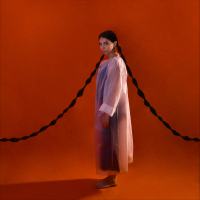
|
-
Portuguese singer, songwriter and musician Ana Lua Caiano’s first record has a narrative bent with each song acting as a short story. By turns melodic and cacophonous, she offers a pleasing debut. The whole project has a rich mix of layered sounds, experimental singing, and electronic music which plays with modern and traditional conventions.
Vou ficar neste quadrado is, by its tone and content, clearly the product of Covid lock down, a reflection of isolation, creatively keeping oneself company and carefully working away electronically. Strata of audio morsels are manipulated by Caiano, pushing the edges of what can be done by one person, and stressing tech and editing over live group dynamics. She plays, sings and does almost everything on the recording herself. There is a sharp focus on detail and a modestly scaled world that feels very apt for the lock down moment it was born in.
Martha Willette Lewis takes a deep dive into these new sounds from Lisbon.
|

|
-
The sight of a person hunched over a laptop hardly makes for an entertaining live gig; it can be like watching someone checking their emails. But as just audio laptoppery in conjunction with traditional music, done by someone who is sensitive and understands the form and its possibilities can sometimes be very effective and a liberation from standard instrumentation. And it certainly is here.
Vaev is the Danish duo of well-known fiddler Poul Lendal (of Lang Linken, Harpens Kraft et al.) who, as well as fiddle, here plays spoons, rummelpot (friction drum), seljefløjte (no-hole whistle) and jew’s-harp, and David Mondrup, who’s the laptopper but also contributes piano and other keyboards described as ‘with and without bellows.’
Andrew Cronshaw introduces you to their latest exploration, Sløjfen.
|

|
-
In the basement of a restaurant in the city of A Coruña, Galicia, we find fifteen guys in black shirts, black trousers, black trilbies. Eleven sing and play traditional hand percussion including pandeiretas (tambourines), cunchas (scallop shells) and tarabelas (split bamboo slap-sticks), the other four add gaitas, accordion, saxes, bombo (bass drum) and cymbals. Os do Fondo da Barra (literal translation: ‘The ones at the bottom of the bar’) is kind of like a male version of a female pandeiretera group plus instrumentalists. While being very much a lively present-day thing, not a historical exercise, the group reflects and draws upon the repertoires of the old Galician corales or coros, the singing, playing and dancing ‘grupos folkloricos’ on their new recording, BâNZô.
Andrew Cronshaw takes you there.
|
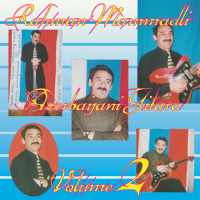
|
-
Mountains function as natural barriers between cultures, and the Caucasus region, a landscape squeezed between the Black and Caspian seas, serves as example of how this can be. Comprising Armenia, Azerbaijan, Georgia, and the Dagestan area of Russia, and framed by the Caucasus Mountains, these countries and regions act as a barrier between Eastern Europe and Western Asia. And needless to say, musical traditions connected to, but not exactly like their cross-continental counterparts, flourish. Stringed instruments such as the tar, the gopuz, the saz, and the avar tambur drive sometimes frantic, other times hypnotic classical Caucasus modal music known as mugham. So, when Jolana electric guitars, imported from what was then Czechoslovakia, became popular in the 1960s, musicians tuned them to quarter tones and deployed them to move the mugham into the latter half of the 20th century and beyond.
Rəhman Məmmədli, whose music relies heavily on traditional sounds from the Caucasus, is perhaps the leading example of electrified mugham, something the new collection Azerbaijani Gitara Volume 2 makes apparent. Using distortion to parrot Azerbaijani vocal styles and adding frets to better achieve traditional accuracy, his music overflows with intensity and mountain-swept power. Check out “Uca Dağlar Başında” to hear it. The tune begins with his guitar, playing a suspected chord over a subtle synth bed, the piercing high tones echoing as off the mountains themselves before the canned rhythm track kicks in, adding chords for him to flit between, his guitar tussling with itself, scaling heights and plummeting to cavernous depths.
Read Bruce Miller's review and hear some of the music.
|
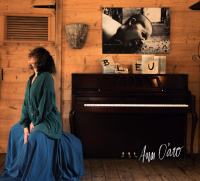

|
-
If you’ve heard any maloya music from the Indian Ocean island of Réunion, the chances are it brings to mind a characteristic rhythm played on percussion, and probably an image of today’s best-known maloya musician internationally, Danyel Waro, energetically shaking his rectangular flat kayamb shaker. Ann O’aro’s third recording isn’t at all like that, even though she’s toured with Waro, and his son Bino is the percussionist in her band, along with trombone player Teddy Doris and electronic manipulations by Brice Nauroy. Bleu is an album far from the usual, far from what’s generally thought of as maloya, and indeed music that wouldn’t immediately be identified as from Réunion. For both Ann O’aro and the music of Réunion, it’s quite a step, and an interesting one.
Read Andrew Cronshaw's review and listen to some of the music.
Bleu is our June, 2024 selection for Music of the Month. Subscribers will receive the recording along with new music each month. Find out more and consider subscribing to support RootsWorld
|
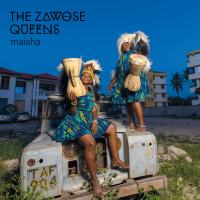
|
-
Part of the Wagogo tribe, the Zawose family are the most internationally recognized group of musicians from the hilly Dodoma region of Tanzania, and they are masters of Gogo music, which not only incorporates chizeze, musical bow, and ilimba (sanza/mbira), but also includes haunting choral vocals as well as dance. And The Zawose Queens, a duo featuring the late Hukwe Zawose’s daughter Pendo and his granddaughter Leah, are making their debut on Real World, the same label that recorded their father 28 years ago. Maisha has its roots in Wagogo legitimacy.
Read Bruce Miller's review and listen to the music.
|

|
-
Kurdish Syrian Bouzouki player Mohammad Syfkhan now calls Ireland home, after fleeing the war in Syria in 2011. The record, which features his electrified bouzouki, sometimes accompanied by cello or saxophone, weaves over a canned rhythm section and is deliriously infectious. The rhythms conjure limitless expanses. There are undertones of Egypt here, occasionally the speed of dabke from Syria?s Houran region there. Needless to say, this debut is long overdue. With nary a duff track in the mix, Syfkhan wraps his bouzouki around the programmed percussion in a way that makes at least some of what?s here ready for the dance floor. But he never lets go of the music?s romance.
Read Bruce Miller's review and listen to some of the music.
|
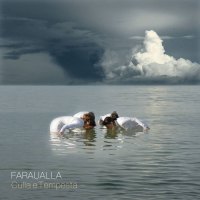

|
-
Acapella singing is the poetry of sound at its purest form. It is naked. This undressed music can sound like an orchestra in the right hands. Faraualla is a female vocal quartet from Apulia, Italy, formed in 1995. Their music is ethereal at times but also has the vocal rat-a-tat-tat sound that creates urgency and rhythm. The songs on their 2024 release Culla and Tempesta ('Cradle and Storm') speaks to our transgressions against nature and the impact it has on sea life and on our children who will suffer the consequences.
Lisa Sahulka introduces you to a vocal group of unique talents and power.
The album is our May 2024 selection for Music Of The Month. Subscribe, and get this recording as our thank you for supporting RootsWorld.
|
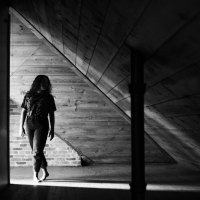
|
-
Zosha Warpeha's debut solo album Silver Dawn features her playing a Hardanger d'amore as well as some vocalisation. The Hardanger fiddle is most closely associated historically with the viola d'amore, itself a baroque instrument, usually with six or seven played strings. Warpeha's hybrid instrument has five bowed strings plus five sympathetic strings resonating below the top ones.
From the outset we are reminded of Norwegian fiddle music, not just by the distinctive sound of the fiddle but in the way the pieces are structured... Warpeha has taken the structural characteristic of the older Norwegian fiddle music and used these as building blocks... However, despite her indebtedness to these Nordic influences this record does not sound like Norwegian folk music. Having used that as a reference point, Warpeha, who lives in Brooklyn NY, has succeeded in producing a sound which is very much her own.
Mike Adcock reviews and you can listen along.
|
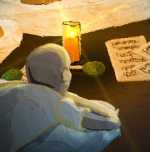
|
-
88 Well-Tuned Drums opens to a darkened screen and a deep-voiced invocation: “Maferefun Ogun, Mareferefun La Ocha.” A faint light then appears, revealing a gracefully moving hand with long, slim fingers, its wrist cuffed in cowry shells. A cardboard-like silhouette emerges now of a young boy facing a cavern brightly illuminated with red and yellow light... The hand belongs to Omar Sosa, and the image is of a young Sosa, about to begin his life’s journey as a pianist, percussionist, composer, and bandleader. Sosa’s story is told with warmth and intelligence in Soren Sorensen’s documentary film.
Read Carolina Amoruso's review of this remarkable documentary.
|


|
-
Mauro Durante and Antonio Castrignanó, preeminent figures in Salentine music, have launched an exciting new project that celebrates their cultural heritage while taking it to a new level. Their brainchild, the Super Taranta Orchestra, is an ambitious ensemble whose 12 musicians and three dancers comprise many of the foremost artists in Salento’s pizzica music and dance.
Durante, the leader of Canzoniere Grecanico Salentino (CGS), the Lecce-based, internationally renowned pizzica ensemble, and Castrignanó, a singer, percussionist, and composer who leads Taranta Sounds, first discussed forming Super Taranta in 2022. Together, they shaped the concept and form of the orchestra. Then, they spoke with the artists they wanted to involve and began rehearsals. All the members of CGS and most of Castrignanó’s Taranta Sounds are part of Super Taranta.
Read George De Stefano's interview with Mauro Durante and Antonio Castrignanó.
|
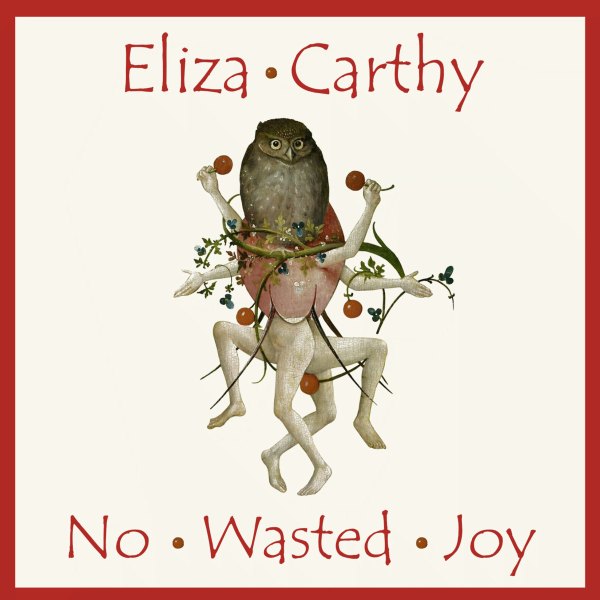
|
-
There's no doubt that Eliza Cathy has folk music in her DNA; after all, her parents are Martin Carthy and the late, much-missed Norma Waterson. But that background alone was no guarantee that she'd turn into the towering, adventurous musician she's become, constantly pushing new ideas But on No Wasted Joy, she strips everything all the way back to simply voice and fiddle. The result is a stark, wondrous window into her talents.
Chris Nickson reviews and you can listen along.
|

|
-
Labels Analog Africa and Soundway have done some of the most exhaustive work in reissuing essential music from sub-Saharan Africa's 1970s golden age, radically expanding western heads' knowledge of how prolific and groundbreaking the music was. Two new collections, from each of these labels, look at the music through a new lens:
Congo Funk! - Sound Madness From The Shores Of The Mighty Congo River (Kinshasa/Brazzaville 1969 - 1982)
and Ghana Special 2- Electronic Highlife & Afro Sounds In The Diaspora- 1980-93.
Bruce Miller reviews.
|
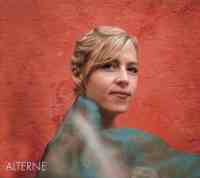
|
-
The record label calls it 'dream folk,' but there’s plenty of crunch and bite to the music in the debut from Alterne, an ensemble from Denmark, Belgium and Estonia who met while studying at the Sibelius Academy in Finland – about as much of a mish-mash as you can find. Ida Marie Jessen composes the outstanding music (playing violin and kantele), but all three can explode with fire and passion... The trio have made an astonishingly assured, ambitious debut, and created a unique, pan-European sound.
Chris Nickson reviews.
|
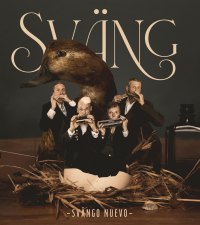
|
-
Sväng has been one of the Finnish folk scene’s most notable exports over the twenty years of its existence... Perhaps the idea of a harmonica quartet might evoke some kind of music-hall novelty act, but Sväng is a combo of amazing skill and creativity making a big, fat, complex sound using only harmonicas, from the familiar diatonic blues type and chromatic through double-sided and the keyed Harmonetta to big chuffing bass. Bass harmonica isn’t acoustically very loud, but its beefy deepness in the ensemble... Their tenth album, Svängo Nuevo, also sees the introduction of an extra tone color from a new Suzuki instrument, the Cello Bass low-tuned chromatic harp.
Andrew Cronshaw reviews.
|


|
-
Kiran Ahluwalia's new album is rich, provocative and, like the moral universe, it bends toward justice. Ahluwalia is an Indian born, Canadian singer who marries ghazal, a type of Indian classical vocalizing, with Punjabi folk music, sufi music and jazz. She is married to the jazz guitarist Rez Abbasi, a much loved musician who performs his Pakistani infused rhythms in this collaboration. He makes the complexity of jazz resonate with a moral authority. Ahluwalia and Abbasi were meant for each other, one born in Pakistan, the other in India, both now living in their adopted Harlem home. This love story began over a breakfast in Mexico when Ahuluwaia shared her meal with Abbasi, which is details on "Pancakes," and provides the duality for the title Comfort Food. The other part of the comfort is the effort to fight for justice, to protest, to fight the good fight. Ahluwalia's songs are profound and enduring, They are specifically a protest against Hindu fundamentalism and ethnic nationalism, but also they call for the world to shed anachronistic beliefs which subjugate, marginalize and ultimately abandon the most in need.
Lisa Sahulka reviews.
|
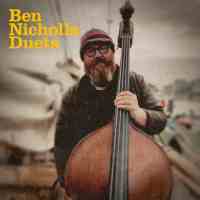
|
-
Bass players often fall beneath the radar. With a few exceptions, people rarely notice the rhythm section unless they make a mistake. Ben Nicholls isn’t a household name to listeners, but to musicians, he’s gold. He’s played with a range of lauded names, and he’s gathered some here for his first solo album, Duets. The title says it all – a real chance for a dialogue between two artists. And a fine group of artists, including Tim Eriksen, Sam Sweeney, Nadine Shah, Martin Simpson, Kris Drever, and singer-guitarist John Smith on Richard Thompson's "Down Where The Drunkards Roll." Chris Nickson reviews.
|
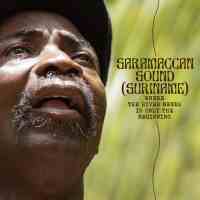
|
-
For the 12th release in Glitter Beat's Hidden Musics series, award winning producer, traveler and radical documenter of unknown music from around the globe Ian Brennan heads into Suriname to record the brother duo of Dwight Sampie and Robert Jabini, who go by the name Saramaccan Sound. Recorded in the field alongside a river in Suriname's Amazon region, and on the duo's front porch over bottles of rum, what's heard on Where The River Bends Is Only The Beginning features nylon-stringed acoustic guitar strumming and vocals, sounds that seem instantly familiar to anyone who's spent any time around unproduced singer-songwriters here in the US. Read Bruce Miller's full review and listen.
|
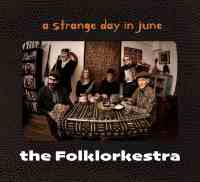
|
-
A Strange Day In June is a curious album, almost chamber Americana in places, and one that manages to be long on both charm and substance. The brainchild of New York multi-instrumentalist and composer, John Kruth, The Folklorkestra calls on some pretty heavy musical hitters, artists whose range of experience covers pretty much everything in music. There's no shortage of great melodies, all performed with panache and plenty of humor, drawing on influences not only from the US but all across the world. Chris Nickson reviews.
Chris Nickson reviews.
|

|
-
It’s hard to believe that Minneapolis’s Boiled in Lead have been going for four decades – well, plus a year now, but the time keeps passing. Yet, how the hell can they rock traditional music so hard after all that time? But the evidence is there for everyone to hear on 40 Years, recorded live in March 2023, by a new, slimmed-down version of the band that’s as full of spiky energy as if they were all still 20 years old. Must be something in the Minnesota water.
Chris Nickson reviews.
|
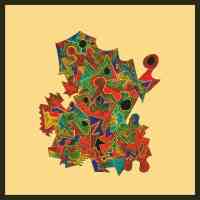
|
-
Thandi Ntuli begins Rainbow Revisited with a zen-like, blurred chant to the sunrise in California. She sings later of the California sunset. She pays tribute to her ancestors on "Nomayoyo,” laments the rainbow that never fully formed in South Africa, performs experiments in breath, synth and voice, sings of “The One” and ends with “Lihlanzekile,” a Zulu word that means ‘It has been cleansed.' It is an album that fits together like the puzzle pieces artist Shabaka Hutchings created for the cover art.
And so, on a Venice Beach afternoon, Ntuli created an intimate and political album. The inventiveness of this music is in part due with the sweetness of the vocals, offset by tight parenthetical ideas on the piano. It touches on the avant garde with warmth. These in-between spaces are so lovely and compelling, layered to make it feel familiar and yet strange, much the way Thelonious Monk deconstructed a jazz standard.
Lisa Sahulka takes a deep dive into a unique artist's new music.
|
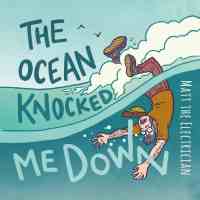
|
-
We've been hearing a lot of quirky new music lately that takes the singer-songwriter genre and turns it more than a little atilt. Matt the Electrician is one of the latest curios to cross my desk. Matthew Sever is the tradesman in question, and The Ocean Knocked Me Down is his 11th album, and yet, it's the first to ever cross my path. Written in the pandemic years of 2020 and 2021, it has more than its share of challenging moments to recount, and yet each one comes back around to the feelings of hope and resolve expressed in the albums title. And not just a little humor.
Cliff Furnald reviews.
|
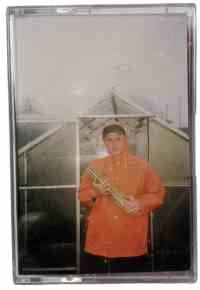
|
-
When you learn that GLARC (the label) stands for Greater Lanarkshire Auricular Research Council and that the album is only available digitally or on cassette, it’s a tipoff that something a little out of the ordinary is going on here. Listen to Durt Dronemaker After Dreamboats and the strangeness leaps right from the beginning. It is, however, a rich and curiously satisfying weirdness.
Harry Gorski-Brown is a multi-instrumentalist (voice, pipes, fiddle, organ, bouzouki, electronics) who takes traditional Scottish Gaelic songs and rearranges them in the shape on his own imagination. While these are new takes on old songs, they sound deeply rooted in the soil and stone, uncompromising in the way they’re presented. Chris Nickson takes you on a musical journey that strays outside of the roots.
Chris Nickson takes you on a musical journey that strays outside of the roots.
|
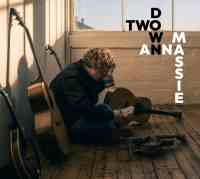
|
-
Anna Massie is seen and heard very frequently playing guitar (mostly, but also fiddle, mandolin and banjo) with many of Scotland's current leading musicians and bands, and is a member of Blazin' Fiddles, Rant and more. Two Down is only her second solo album; hard to believe, given her youthfulness, that the first was twenty-one years ago, the year she won Scottish Young Traditional Musician of the Year for 2003.
It really is solo, too. Apart from a couple of tracks where she's joined by her mum and dad on spoons and mandolin, she does everything - vocals, guitars, fiddle, mandolin, banjo and more, and produces. In some musicians' projects that can result in something carefully multi-tracked lacking the liveliness of interaction with others, but not so here. Andrew Cronshaw reviews.
|

|
-
A quarter of a century ago, three musicians put the windswept North Sea island of Fanø, just off the west coast of Denmark, on the global musical map. ULC - fiddler Peter Uhrbrand and melodeon player Sonnich Lydom, along with an Irish transplant, Brian Cahill, on guitar and bouzouki - played the music of Fanø, which Uhrbrand and Lydom had known almost all their lives. 'The island's tradition is one that has been passed on locally, usually within families. Nothing was written down, with each generation adding its own touches. 25 years on from that debut, Sik Og Sejs (Come and Go) has been reissued. The music that helped inspire a generation of young Danish musicians and sold out three pressings on its release has returned. It?s dance music with an 18th century country gentility, music for looking your partner in the eye as you move around the dancefloor. It?s a reflection of how much Danish music can trace its origin to the English music of the period and its influence in the country.
Chris Nickson introduces you to one of the great recordings of the Danish roots revival.
Chris Nickson reviews.
|
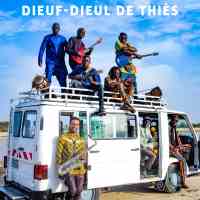

|
-
This new self-titled album by Dieuf-Dieul De Thiès makes a strong argument for the power of reissue labels. Two volumes of the band’s only known recordings came out in 2013 and 2015, and a band who had split in 1983 without ever releasing a record suddenly had something of a global audience. Ultimately, it’s difficult to imagine their 40-years-late, self-titled debut album is just coming around, and not a moment too soon either, as one of the only two founding members present on this recording, guitarist Papa Seck, died prior to this album’s release.
And despite being an almost entirely different line-up (only vocalist Bassirou Sarr and the late Seck are present), they seem to pick up right where they left off. Mbalax rhythms underpin split-second horn blasts, hypnotic, stoned discharges of Seck’s fuzz-drenched lead guitar, and Sarr’s deep, soaring vocals.
Bruce Miller reviews.
Dieuf-Dieul De Thiès is our pick for Music of The Month.
|

|
-
From Italy’s southern Apulia region, singer Maria Mazzotta has a remarkably memorable voice, and a taste for musical adventure. For a decade and a half she was a member of the acclaimed Canzionere Grecanico Salentino, before branching out into solo projects exploring her regional traditional in different ways. With Onde, she’s literally electrified things. The opener, “La Furtuna” lays out the manifesto quite explicitly: a reinvention of the tradition with beautifully scuzzy guitars and electronics. It’s a shock to the system – a very welcome one.
Chris Nickson takes you into the music.
|


|
-
Concertina, double bass, trumpet and a couple of voices (plus a touch of violin here and there) seems an unlikely combination, but Strandline have hit on something unique in mixing them together. The trio of Kat Blockley, Claude Lamon and Lizzie Pridmore play a unique, beautifully wonky style of folk music. Inland, their debut five-track EP, has a sitting room intimacy whose closest parallel maybe be the unforced, charming eccentricity of Ivor Cutler.
Chris Nickson finds it all endearing and off-kilter.
|
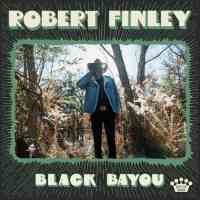

|
-
Two veteran and venerable artists, Robert Finley and Bobby Rush, affirm the vitality of the blues. Their latest works - Black Bayou and All My Love for You - demonstrate how the blues, far from being only a music of sorrow and suffering, speaks to the whole range of human experience. Tribulation and troubles? Yes, and both can deeply move a listener with their sad songs. But their albums also are ribald, even raunchy, reveling in the frank sexuality of the blues. There's also humor, wisdom, braggadocio, and resilience. In other words, all of life.
For both men, recognition and success came late in life. And while the blues is their fundamental point of reference, they also bring the funk, soul, R&B, and rock to the mix.
George De Stefano takes a deep dive into the music of two very different artists.
|

|
-
Irish traditional music has been handed down across the generations during face-to-face interactions, whether it was at a pub session or a kitchen table or gathered together to enjoy an atypical unrainy day. In more modern times, conservatories and online videos have augmented the traditional ways, but long-time fiddle master Kevin Burke has created Music from an Irish Cottage, a hybrid for the digital age – a series of videos with small knots of old hands playing their beloved instruments and swapping stories in front of a wood stove in a small, rustic cabin in the Irish countryside.
Marty Lipp invites you to sit by the fire and listen.
|

|
-
There are many albums that are of interest for various reasons, but I guess what really attracts me to the entirety of an album is that it starts intriguingly and maintains my attention throughout. Here's a prime example. Alessandro D'Alessandro is a leading player of organetto, the Italian name for a diatonic button accordion (the sort that makes a different note on the push from the pull). Canzoni is a tour de force of D'Alessandro's constantly unusual and innovative arrangements, featuring a variety of singers and instrumentalists, of songs and tunes by a range of mostly Italian composers. It doesn't come across as an organetto showpiece; his highly skilled playing and techniques are subsumed to the creation of fully rounded, rich pieces of music, and only by checking the credits is it clear just how much of the sound comes from that instrument.
Andrew Cronshaw reviews these 'Songs for prepared and electronic organetto.'
|
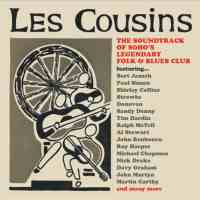
|
-
Les Cousins: The Soundtrack Of Soho's Legendary Folk & Blues Club may be a memory of a time and place that’s long gone, but what a time and what a place. Down in the cellar of a restaurant in the middle of London, Les Cousins (originally intended to be pronounced in the French way) was one of the crucibles of the British folk scene, playing host to quite a few artists who’d go on to become famous. The club’s all-nighters on the weekend gave musicians chance to develop their skills and be paid for the privilege. People like Bert Jansch, John Renbourn, Sandy Denny, even a pre-pop fame Cat Stevens and many Americans like Jackson C. Frank and Derroll Adams honed their sound on that stage.
Chris Nickson explores the riches of this collection compiled by musician and editor of the late and equally legendary fROOTS, Ian A, Anderson.
|

|
-
Here it is, the odds and sods from Tiger Moth, the band that gleefully trampled all over English ceilidh music in the 1980s and introduced it to sounds from around the globe. Ostracon collects the tracks from the two LPs they released that didn't make it on to the Mothballs best-of collection, and adds on a 2004 track from the band's reunion in 2004. You've never heard the old-time banjo frailing track "Soldier's Joy" sound like this before, and who can resist something titled "Hunt The Goat"? Much more besides to send you crashing round the living room and breaking the lamps as you dance.
Sound Bites is our collection of short reviews, and well, sound bites.
|
-
 Some of our favorite recordings of the past year
Some of our favorite recordings of the past year
Not so much a Best Of list, but simply some of the editor's and writers' recommendations for listening to the world in 2023. In random order, here are notes from RW editor Cliff Furnald, and writers Michael Stone, Chris Nickson, Andrew Cronshaw, Martha Willette Lewis, Lee Blackstone, Marty Lipp, Mike Adcock, and Carolina Amoruso.
The artists we picked for 2023 are (in mostly random order): The Hack-Poets Guild, Shirley Collins, Laura Itandehui, En Gramma, Too Sad For The Public, Hiram Salsano, Hazmat Modine, Sarah-Jane Summers, Blind Boys of Alabama, Maria Ka, Jake Blount, Mar Grimalt, Seckou Keita, Snowapple, Lankum, Eliza Carthy Trio, Chango Spasiuk, Abel Selaocoe, Brighde Chaimbeul, La Bottine Souriante, Erol Josué, Baaba Maal, Camilla Hole Trio, Carminho, Jody Stecher.
Read more about our picks and listen to a song from each one.
|
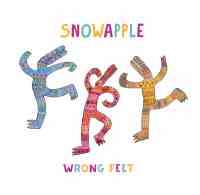
|
-
Wrong Feet is a celebration of the music of South African jazz saxophonist Sean Bergin by Snowapple, a trio of Laura Polence, Laurien Schreuder and Bergin’s daughter Una.
They present an album that tackles heavy topics with good-humored absurdism, carried by inventive musicianship with strong Afro-Caribbean rhythms, spare clapping, and multiple sonic surprises, and lyrics that have a wry sharpness, about the foibles of human behavior.
Read Martha Willette Lewis's review and listen.
|

|
-
Carolina Amoruso sat down with Cuban pianist and composer Omar Sosa to talk about music and food, the changes in Cuba over the last few decades, and his musical adventures in various parts of the world.
They talk about Sosa's latest latest adventure, a collaboration with Italian trumpeter and composer Paolo Fresu. Together, they roamed around, listening to the sounds of kitchens and family dinner tables, before settling in for two days of recording improvisations based on those experiences.
Read the full interview and hear some of the music.
|
Support RootsWorld. Subscribe to Music of the Month.
Browse more reviews from
2023
2022
2021
2020
2019
2018
2017
2016
We Interupt Our Regularly Scheduled Magazine For This Important Announcement.
RootsWorld cannot survive without the support of our readers. If you want to hear great music and read great writers, then we need each listener and reader to contribute just a little to make it happen. Please join us!
Make a One Time Contribution Today!
|
$5.00
|
$10.00
|
$20.00
|
|
$40.00
|
$70.00
|
$100.00
|
Please contribute to our survival.
About RootsWorld: RootsWorld is a world music magazine started in 1993, pretty much at the dawn of the term "world music" as well as the pre-dawn of internet publishing (I suspect this was the first music magazine of any sort published on the www). Our focus is the music of the world: Africa, Asia, Europe, Pacifica and The Americas, the roots of the global musical milieu that has come to be known as world music, be it traditional folk music, jazz, rock or some hybrid. How is that defined? I don't know and don't particularly care at this point: it's music from someplace you aren't, music with roots, music of the world and for the world. OK?
All pages at RootsWorld are © 1992-2023 RootsWorld/ Cliff Furnald / FNI Multimedia Publishing, New Haven CT
The RootsWorld name is protected by US trademark law.
All picture and sound images are the property of the artists and record labels, and are protected by copyright. No file or part of a file may be used for any purpose, commercial or non-commercial, without the express written consent of RootsWorld or the other copyright owners.
About the use of sound files and copyright protections at RootsWorld
|
